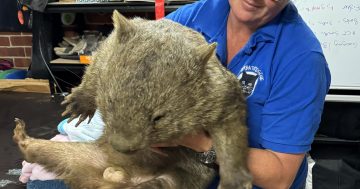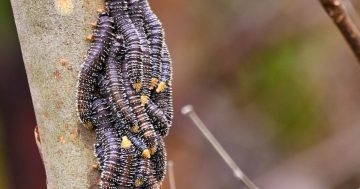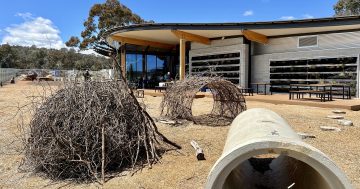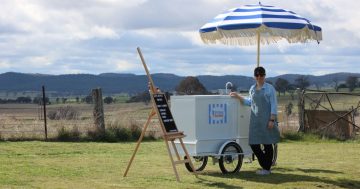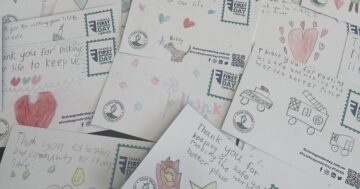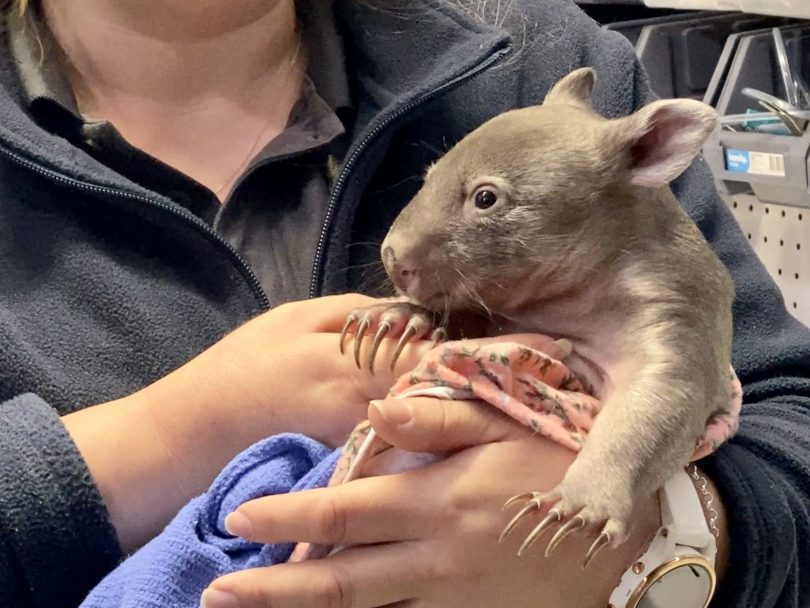
Evie, a young wombat joey in care at ACT Wildlife. Photo: James Coleman.
Evie is one of several young bare-nosed wombats in care at ACT Wildlife. The tiny eight-month old joey is currently cuddling into the warm and cosy arms of her carer, but come adolescence, she will be released back into the wild to brave the real world.
However, just releasing her anywhere isn’t an option.
Skin condition mange is rampant among the wombat population of the ACT, and the army of volunteers at ACT Wildlife have spent years trying to get on top of it. A new online portal launched on Friday, 12 November, is set to make their job a lot easier and improve things for one of Australia’s icons.
In a partnership with ACT Wildlife and Wombat Rescue, the ACT Government is hosting the portal as a place where members of the community can log their wombat sightings quickly and easily.
The two wildlife care groups also score an additional $30,000 in funding to help tackle the mange problem, as laid out in the 2020/2021 ACT Budget and the Parliamentary Agreement signed when Labor and the Greens joined forces at the last ACT election.
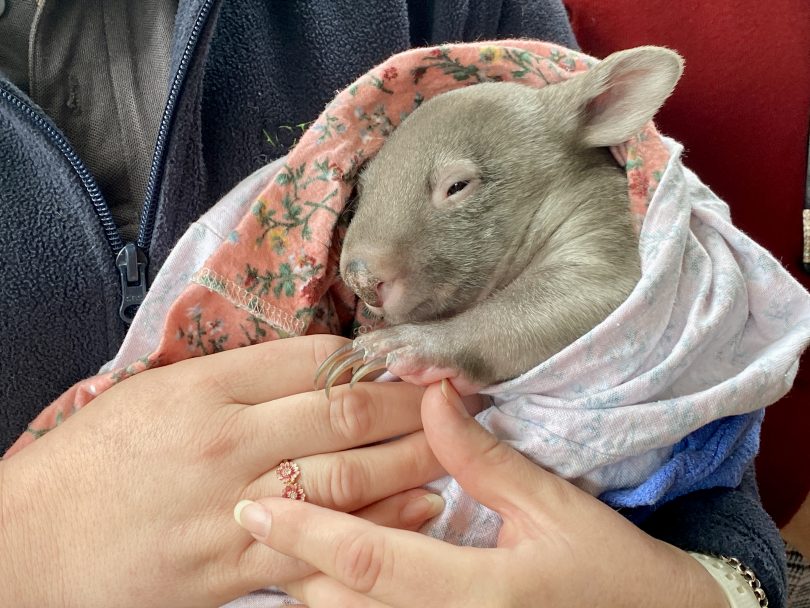
Evie, the young wombat joey getting plenty of love at ACT Wildlife. Photo: James Coleman.
Members of the community out on a walk can report sick or injured wombats through the portal, pinpointing the location so volunteers can attend the scene.
ACT Minister for the Environment Rebecca Vassarotti said the government is working with ACT Wildlife and Wombat Rescue to map wombat abundance and distribution in the ACT, including where there are occurrences of mange.
“This is so we have improved data on our populations and can better coordinate and target treatment where necessary,” she said.
Mange is a skin infection caused by parasitic mites that burrow into the skin. It is also known as scabies in humans. Affected wombats lose their fur, develop weeping, crusty skin, lose their vision and hearing, and eventually die after suffering for many months.
The parasite is spread through wombats and other affected animals sharing burrows, and from mother to young pouch joeys.
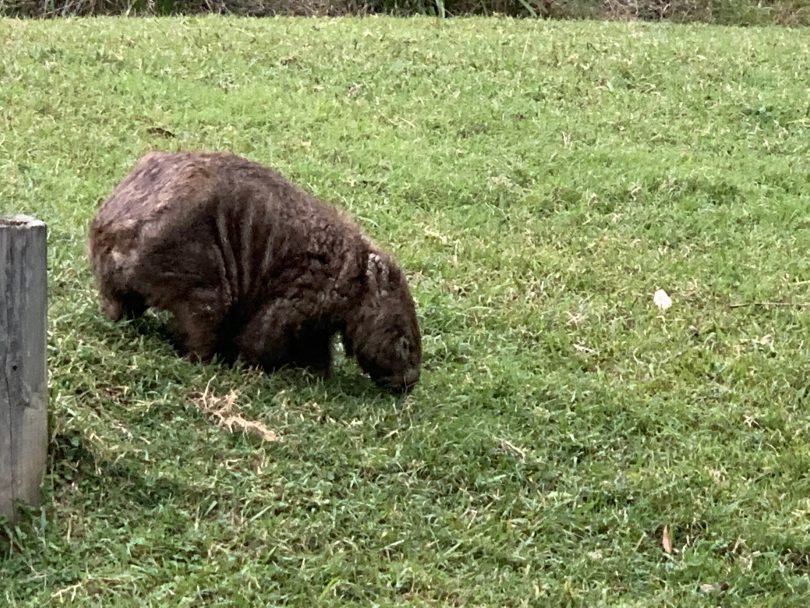
A wombat suffering from mange. Photo: Kim Treasure.
The cost of treatment has been a major hurdle in combatting the fatal disease. The $30,000 funding will offset the cost of treatment, while the online portal builds on a wombat mange program ACT Wildlife already has in place.
From 2017 to 2018, ACT Wildlife mange treatment volunteers carried out a government-funded trial program, using the stock parasite treatment Cydectin to treat approximately 150 mange affected wombats around Lanyon Homestead, Tharwa and Gudgenby River. This was at the cost of $15 to $20 per burrow.
ACT Wildlife president and wombat coordinator Lindy Butcher said that during the past four years, the team has treated about 500 burrows.
“This portal broadens the scope of our treatments,” she said. “Where there’s one mangy wombat, there are always more.”
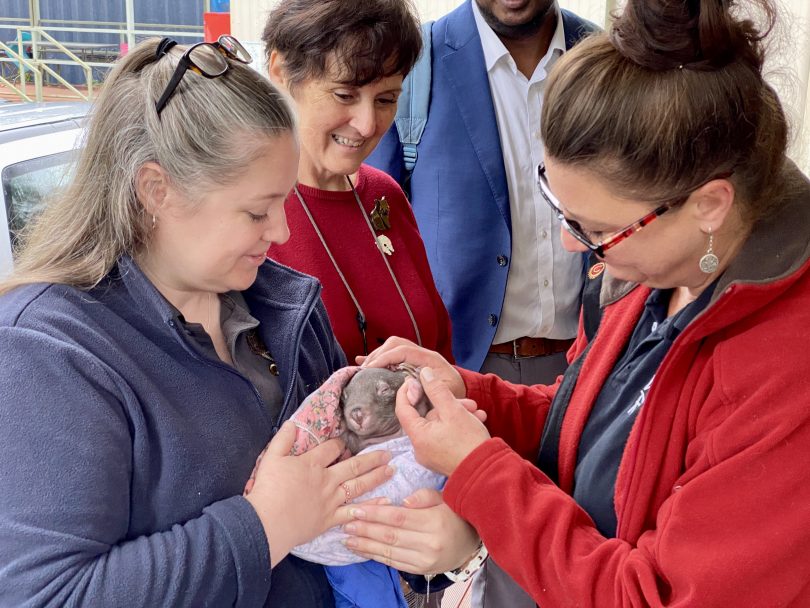
A carer holding a wombat joey with ACT Wildlife president Lindy Butcher and Yolandi Vermaak from Wombat Rescue looking on. Photo: James Coleman.
All of the treatments are done out in the field, unless the wombat is too sick to manage on its own. Currently, Cydectin is the go-to drug for treating mange in wombats, but is let down by the fact it is a 16-week course and therefore extremely labour intensive.
But Ms Butcher said research being undertaken by the University of Tasmania is opening the way for a new single-dose treatment called Fluralaner, which she said would be a game changer.
“If you see a wombat in the wild, report it and we will take it from there,” she said.
You can find the new wombat sightings portal here.
Original Article published by James Coleman on Riotact.




